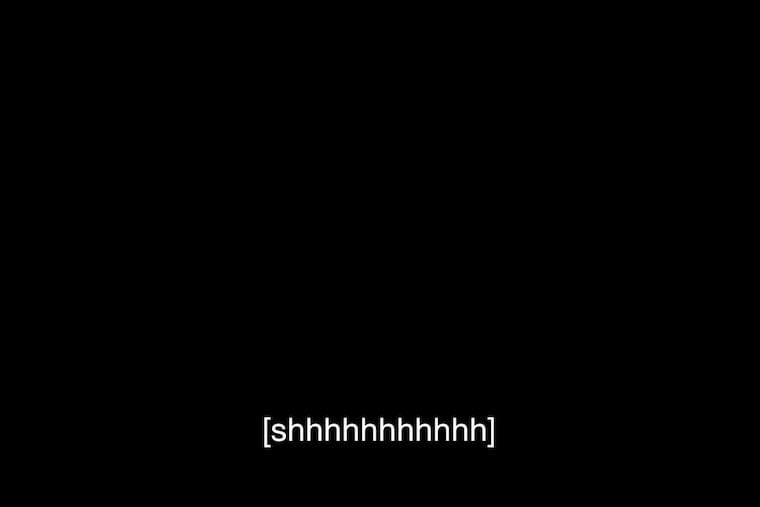An artist forces us to imagine a world without images
Carolyn Lazard prompts the viewer to experience the world through a lens of disability and to consider who is able to access art

When one enters Carolyn Lazard’s show, “Long Take” at ICA Philadelphia, they stand in a dark, mostly empty room. Sounds of scuffling, shifting, and breathing come from speakers hung on all sides; voices directing and describing a series of actions fill the space.
Four benches, generously backed and cushioned, are placed around the room.
There are three monitors in the middle; each playing a different video channel, but there are no images to be seen. Instead, each screen shows a stream of captions.
One, voiced by Lazard, gives the directions to a dance score (start slow, adjust speed, build sequence, breakup, rest). Next to it, another monitor silently describes the noises being heard (breath, sweep, creak, thud), and the last, voiced by poet Joselia Rebekah Hughes, exactingly enunciates a visual description of the movements of a dancer whom we can hear, but not see. Visual descriptions make experiences accessible for anyone who is blind or has low vision; they give context, and allow people access to visuals most of us take for granted.
Lazard is an artist whose practice has long intersected with their own experience of disability. In Leans, Reverses, the video work that makes up the central piece of the exhibition, they turn visual descriptions on their head and ask us to experience a dance performance only through sound and description.
Without an image, the screen’s primary didactic function is erased, and non-visual senses become heightened. The intimacy it produces is startling.
The dancer, Jerron Herman, was diagnosed with cerebral palsy at age 3. He embraces his disability and envelopes the unconventional shapes his body produces into his work as a dancer. Herman’s breath, the shuffling of his feet, or sweeping of his arm, are all magnified by the speakers hanging in rows around the room. There is a clear presence — almost as if you can smell his sweat and feel the vibrations of his weight.
The noises of movement and heavy breathing in the darkness come like a lover’s embrace — disorienting, but not without pleasure. The viewer is forced to imagine, to visually map the movements in their mind, creating a multitude of possibilities, an infinite way to experience the piece anew each time.
Leans, Reverses, builds on the legacy of dance for camera, made by artists like Merce Cunningham and Yvonne Rainer in the ‘60s and ‘70s with the aim of making experimental dance accessible to a wider audience through television. Lazard takes the concept of access further, prompting the viewer to experience the world through a lens of disability and to consider who is able to access art, and what accommodations both artist and institution make to be inclusive of disabled audiences — which are too often little to none. Many art institutions have been slow to consider accessibility, despite pledges of equity and inclusivity.
Lazard’s denial is an invitation for viewers to look more critically and for institutions to consider those who are too often overlooked. The piece asks the audience to do the work of visualizing the dancer’s movements. Here, the screen is simply a tool, not a master, and it is up to the viewer to wield it. Those who do will be rewarded handsomely, armed with a new way of looking at the world and compassion for those who experience it differently.
“Long Take” is on view through July 9. Institute of Contemporary Art, 118 S. 36th St., Phila. https://icaphila.org/exhibitions/carolyn-lazard-long-take/